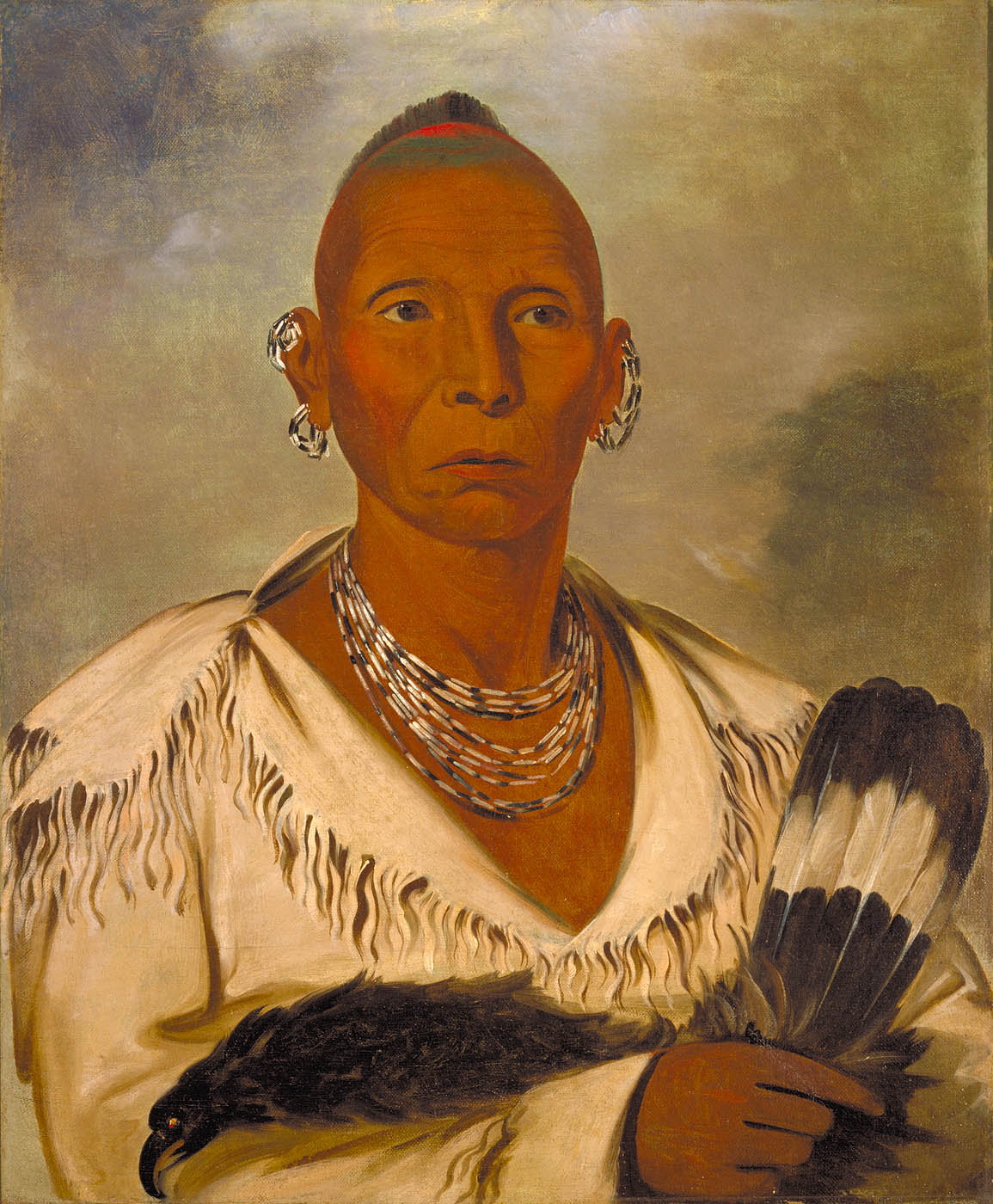Ma-ka-tai-me-she-kia-kiak [Mahkate:wi-meši-ke:hke:hkwa] means "be a large black hawk"
Black Hawk was a war chief and leader of the Sauk tribe in the Midwest of the United States. He was known more for being a war leader, a “captain of his actions” than he was a tribal chief. Black Hawk earned his credentials by leading raids and war parties in his youth. The War of 1812 consisted of the United Kingdom of Great Britain and Ireland against the United States where part of it took place around the Great Lakes area. An undeterred Black Hawk and his group of about 200 warriors were allies for the British, and they fought against the U.S. army. It was Black Hawk’s wish to push white settlers away from his people in the Sauk territory. Saddened by the many lives that were lost due to European attack methods, Black Hawk returned home to Saukenuk.
In the 1804 Treaty of St. Louis, the Sauk and Fox, in exchange for an annual payment of goods, both tribes gave up a stretch of land that started in Missouri through most of Illinois, and part of Wisconsin. Black Hawk resented the treaty saying that the tribal leader who had signed it was not authorized to sign treaties. In 1832, Black Hawk led a loose confedaracy of the Sauks, Meskwakis and Kickapoos known as the “British Band”. These tribes made up about 1500 warriors and non- combative people that crossed the Mississippi River into the state of Illinois from Iowa.
Black Hawk and his followers had contested the seizure of 50 million acres (20 million hectares) of territory that had that the U.S. government claimed following the 1804 Treaty of St. Louis. Black Hawk openly defied the U.S. government and attempted to reoccupy tribal lands along the Rock River in Illinois. The intention of Black Hawk was to peacefully regain and settle on tribal land that had been taken by the United States in the 1804 Treaty of St. Louis.
When the British Band tried to return to Iowa, there were a number of battles with opposing forces. The last war fought on the east side of the Mississippi River was called the Black Hawk War.
On August 2nd, the Massacre at Bad Axe (sometimes called the "Battle of Bad Axe") occurred when Sauk people attempted to surrender. Instead of accepting the surrender, American soldiers gunned them down indiscriminately. Women carrying children on their backs attempted to swim across the Mississippi River to safety were shot at by soldiers. Many of those not shot to death drowned in the Mississippi waters.
After the war, Black Hawk lived with the Sauk in Iowa, he later died after a two week illness. He was buried on a friend’s farm in Des Moines River, Iowa.
While detained by American forces, Black Hawk dictated his autobiography, published as "Autobiography of Ma-Ka-Tai-Me-She-Kia-Kiak, or Black Hawk". This was one of the first Native American autobiographies published in the U.S.
AUTOBIOGRAPHY OF MA-KA-TAI-ME-SHE-KIA-KIAK,
Megathreads and spaces to hang out:
- ❤️ Come listen to music and Watch movies with your fellow Hexbears nerd, in Cy.tube
- 💖 Come talk in the New Weekly Queer thread
- 💛 Read and talk about a current topics in the News Megathread
- ⭐️ August Movie Nominations ⭐️
reminders:
- 💚 You nerds can join specific comms to see posts about all sorts of topics
- 💙 Hexbear’s algorithm prioritizes comments over upbears
- 💜 Sorting by new you nerd
- 🌈 If you ever want to make your own megathread, you can reserve a spot here nerd
- 🐶 Join the unofficial Hexbear-adjacent Mastodon instance toots.matapacos.dog
Links To Resources (Aid and Theory):
Aid:
Theory:



I made fried noodles with fresh vegetables and soy sauce in a wok. Everytime I cook this meal it makes me happy - it's so simple and yet so very delicious.
recipe?
I mean it's very basic and it changes depending on the vegetables available but roughly: